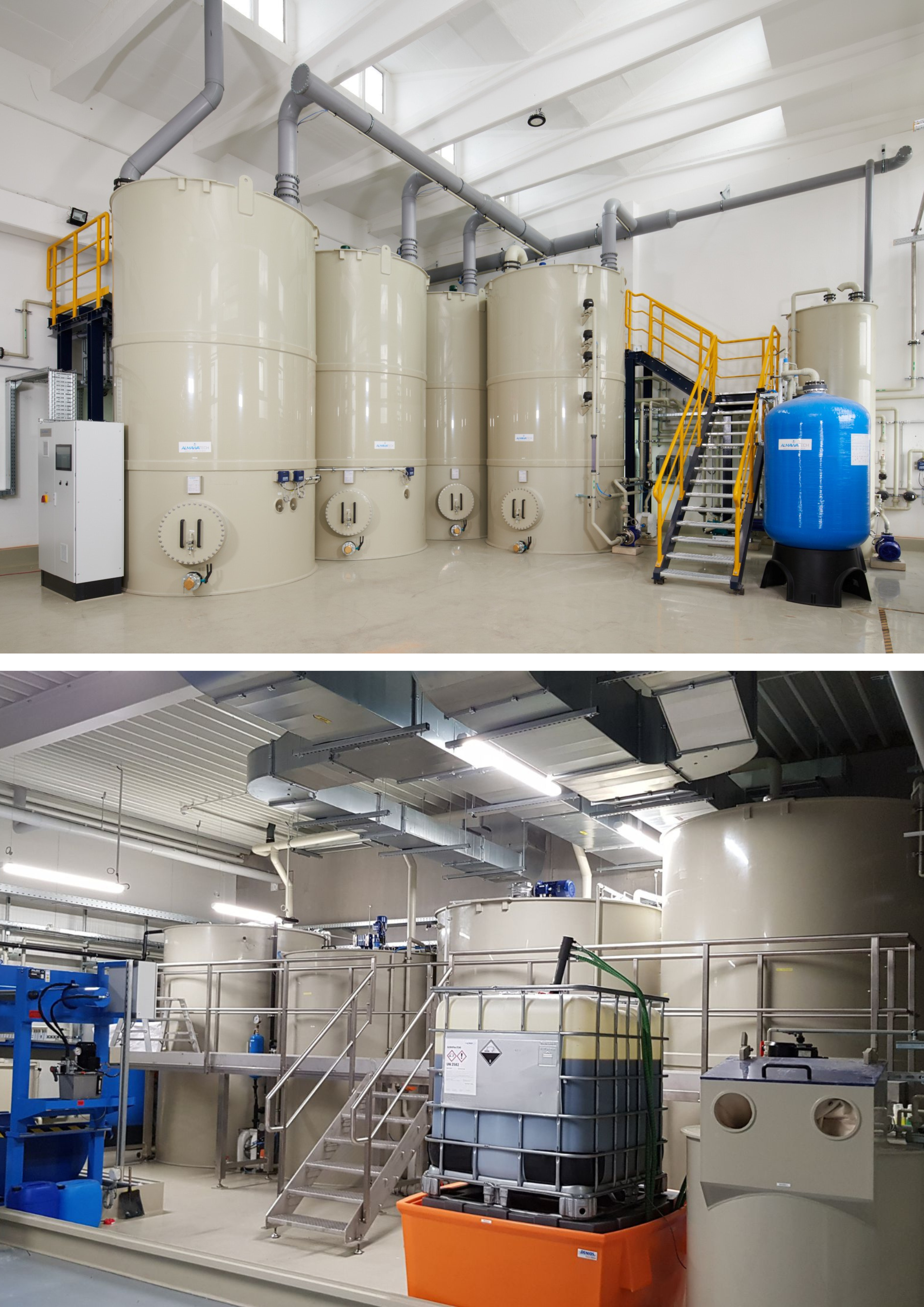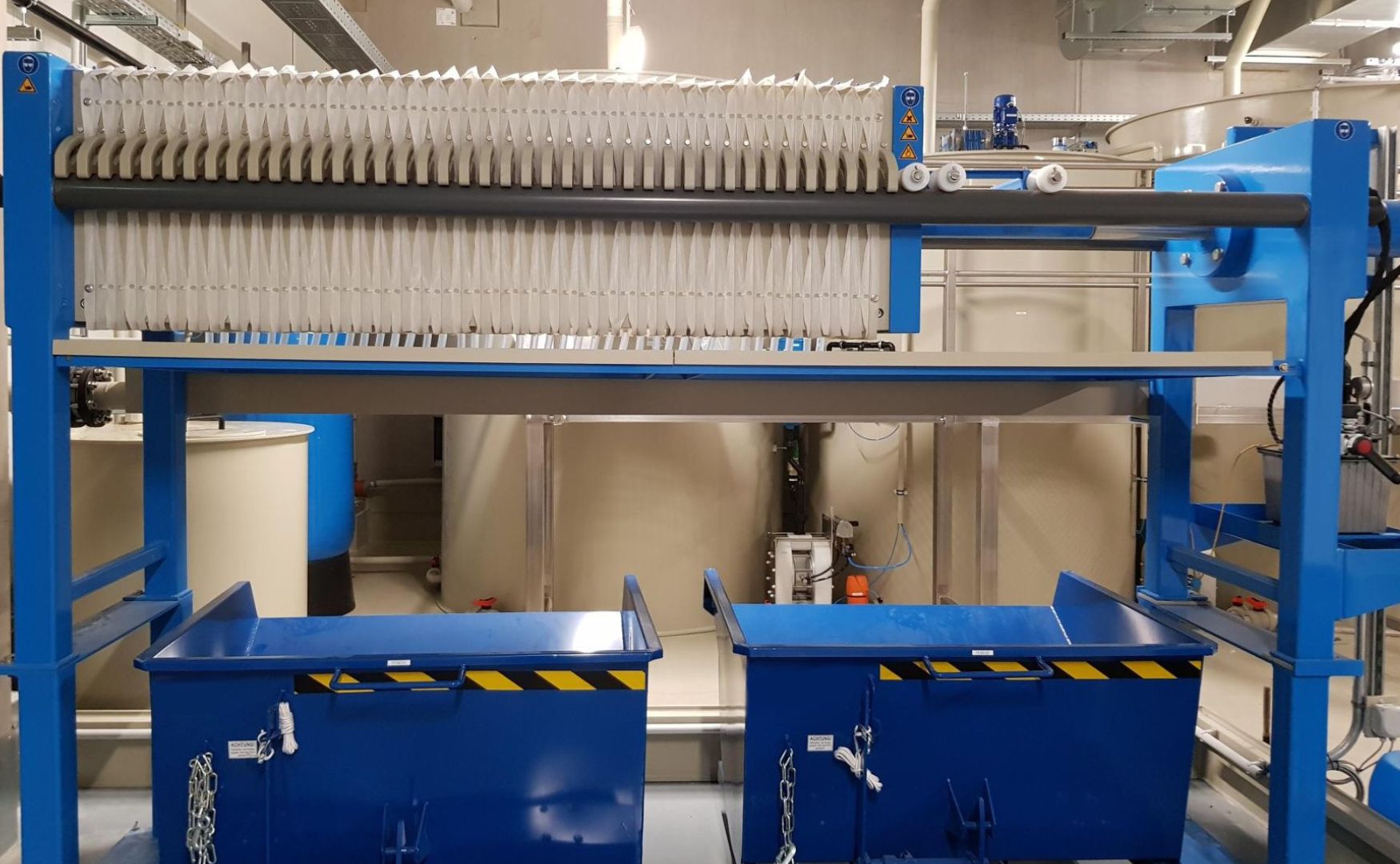Calcium hydroxide (Ca(OH)₂), also known as slaked lime or slaked lime, is an inorganic compound that plays an important role in industrial water treatment and wastewater treatment. It is formed by the reaction of calcium oxide (CaO), also known as quicklime, with water. Calcium hydroxide is a white, solid powder or water-dispersible material capable of increasing the pH of water and acting as a precipitant act as a precipitant.
Table of contents
Technical background and applications
Calcium hydroxide has many applications in water and wastewater treatment, as it has both chemical and physical properties that can be used for neutralization, precipitation and pH control. Its main applications include:
1. pH value increase
Calcium hydroxide is often used to increase the pH value of acidic wastewater as it has a strong alkalizing effect. When added to acidic water, it reacts with the hydrogen ions (H⁺) dissolved in the water, neutralizing or alkalizing the pH value. This neutralization is particularly important to ensure compliance with discharge limits for wastewater and to prevent corrosion in pipes and systems.
2. precipitant
A key application of calcium hydroxide in wastewater treatment is chemical precipitation. It reacts with dissolved metal ions and phosphates to form poorly soluble compounds, which precipitate as flocs and are subsequently removed by sedimentation or filtration can be removed by sedimentation or filtration. This process is crucial for the removal of heavy metals such as zinc, lead or copper and for the reduction of phosphates, which can often lead to eutrophication in wastewater.

Photo: CP system ALMA CHEM MCW for the elimination of heavy metals, AOX, hydrocarbons and cyanides
3. milk of lime
Calcium hydroxide is often used in the form of milk of lime an aqueous suspension of calcium hydroxide that is easier to handle and dose. Milk of lime is particularly used in continuous process plants, as it enables uniform addition and control of the pH value.

4. sludge dewatering:
Calcium hydroxide is used in sewage sludge treatment processes to improve the structure of the sludge and reduce the water binding capacity. This facilitates the dewatering of the sludge and reduces the volume for disposal.

Photo: ALMA CFP chamber filter press for dewatering sludge from wastewater treatment
Application of calcium hydroxide in practice
Calcium hydroxide is used in a wide range of industries as it is a versatile precipitant. precipitantpH regulator and neutralizing agent neutralizing agent. Here are some specific industries where calcium hydroxide plays a significant role:
Metalworking industry
In electroplating, metal finishing and surface treatment, calcium hydroxide is used to precipitate heavy metals such as zinc, copper and chromium from process wastewater. These heavy metals are often present in dissolved form in wastewater and must be removed before discharge. Calcium hydroxide causes the metals to precipitate as hydroxides, which can then be separated as sludge. This is crucial to meet environmental regulations and minimize the impact on water resources.Food and beverage industry
Calcium hydroxide is used in the food and beverage industry to neutralize acids in process and waste water. The production of sugar, alcohol and dairy products in particular produces acidic wastewater, which is neutralized with calcium hydroxide to prevent corrosion in pipes and systems. Calcium hydroxide also contributes to the treatment of drinking water, which must be in perfect hygienic condition for production.Mining and minerals industry
Calcium hydroxide is used in the mining industry to neutralize acidic mine water and process solutions. These waters are produced during the extraction and processing of metals and minerals and often contain high concentrations of heavy metals and acids. By adding calcium hydroxide, these metals are precipitated as poorly soluble hydroxides, which greatly reduces the metal concentration in the water. This is particularly important in gold and silver extraction and in copper and zinc processing.Pulp and paper industry
In pulp and paper production, calcium hydroxide plays an important role in pH regulation and the treatment of wastewater resulting from the use of bleaching agents and chemicals. It is used to neutralize excess acids and bring the pH of wastewater to a level suitable for biological treatment processes in wastewater treatment plants. In addition, calcium hydroxide is also used in some cases in fiber treatment to improve the properties of the raw material.Chemical industry
In the chemical industry, calcium hydroxide is used as a pH correcting agent in various processes that produce acidic or alkaline wastewater. These include the production of paints and varnishes, pharmaceuticals, plastics and cosmetic products. Calcium hydroxide is a particularly important component in waste neutralization in the production of inorganic chemicals, as it neutralizes excess acids and prevents the formation of deposits.Glass and ceramics industry
Acidic wastewater is often produced in glass and ceramics production and needs to be neutralized. Calcium hydroxide is used to treat the process water and prevent the formation of deposits in the waste water pipes. Calcium hydroxide is also used as a clarifying agent in glass production to remove unwanted impurities from the melt.Energy and power plant industry
In power generation, particularly in power plants that burn fossil fuels, calcium hydroxide is used to clean exhaust gases and remove sulphur dioxide (SO₂) released during the combustion of coal and oil. The process, known as flue gas desulphurization, uses calcium hydroxide to bind sulphur dioxide, which reacts to form calcium sulphate (gypsum), which is then safely disposed of or reused as a by-product.Pharmaceutical and cosmetics industry
In the pharmaceutical industry, calcium hydroxide is used to neutralize waste water produced during the manufacture of medicines and chemicals. In cosmetics production, calcium hydroxide can be used as an auxiliary substance for pH adjustment and as a neutralizing agent to ensure the chemical stability of end products.Textile industry
In textile processing, calcium hydroxide is used to neutralize acids and for pH control in various processes such as dyeing, bleaching and finishing textiles. It ensures that the wastewater streams after these processes are suitable for discharge or further treatment.
Advantages of calcium hydroxide in water and wastewater treatment
Effective pH regulation: Calcium hydroxide is a cost-effective and efficient solution for neutralizing acidic wastewater and stabilizing the pH in water circuits.
Precipitation of heavy metals and phosphates: Calcium hydroxide enables the effective removal of pollutants through chemical precipitation, which leads to a significant reduction in environmental pollution.
Easy to handle: In the form of milk of lime, calcium hydroxide can be easily dosed and integrated into automated systems, simplifying the operation of water and wastewater treatment plants.
Widely used and available: Calcium hydroxide is a cost-effective material that is available in large quantities worldwide and is used in a variety of industries.
Challenges in the use of calcium hydroxide
Formation of sludge: The reaction of calcium hydroxide with dissolved ions often leads to the formation of precipitation products, which must be removed and disposed of as sludge. This requires additional sludge treatment and can increase operating costs.
Overdosing and corrosion: If dosed incorrectly, calcium hydroxide can raise the pH value too much, which can lead to scaling and potential corrosion in pipes and system components. Precise control is therefore crucial.
Handling and safety: Calcium hydroxide in powder form is dusty and can be irritating to skin and eyes on contact. Therefore, appropriate protective measures must be taken when handling this substance.
Conclusion
Calcium hydroxide is a versatile and widely used neutralizing and neutralizing and precipitating agent in industrial water and wastewater treatment. It is used effectively for pH control, precipitation of phosphates and heavy metals as well as for sludge dewatering. Thanks to its wide availability and easy handling, calcium hydroxide is an indispensable resource in many industrial applications, especially in metal processing, food production and municipal wastewater treatment. Despite its numerous advantages, the use of calcium hydroxide requires careful control to avoid overdosing and the associated problems such as scaling or corrosion.
For further information on our products, please feel free to contact us at any time!








